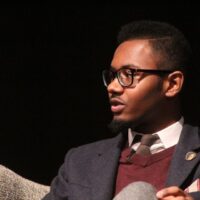Claire Tratnyek
PhD in World History
Expected to Graduate in 2024
Claire Tratnyek earned her BA in Anthropology and European History prior to graduating from Northeastern with MA degrees in World History and Teaching. After being an educator for nearly a decade in Boston schools, she became especially interested in the history of teaching history—the curricula, the textbooks, and the pedagogy. With a PhD in History, Claire wants to produce public-facing work that can inform educators who work in K-12 systems and higher education.

“Northeastern recognizes the value in connecting pragmatic, non-academic experiences with traditional university learning opportunities. These ‘real world’ experiences allow graduate students to do work that may be more public-facing or wide-reaching.”







